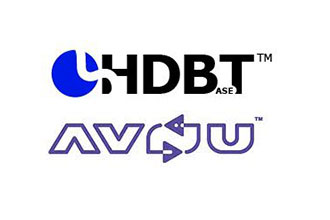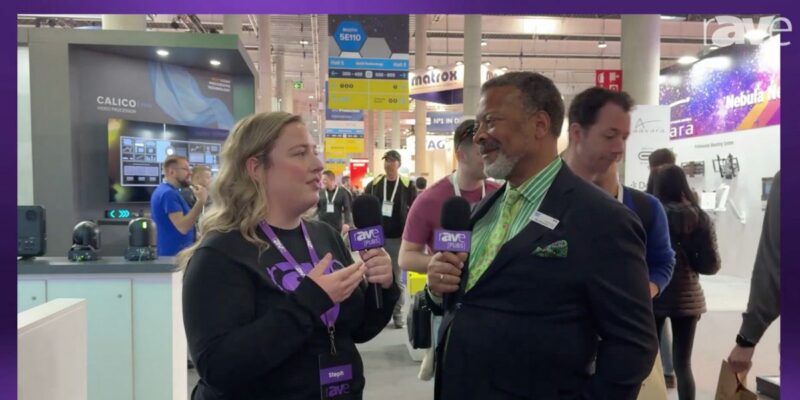If You Have Not Heard Much About HDBaseT or AVB – You Will Soon
 HDBaseT is a funny name for a new connector that is likely to have a big impact on ProAV integration as well as connections in the home. In a nutshell, it is a networked-based protocol that allows delivery of video, audio, control, Ethernet and power over a Cat5e/6 cable – something almost every professional installation and consumer home already has. At InfoComm, we noticed a lot of new products and announcements related to this connection standard, as well as its competitor, AVB, so we figured it was time to give you a heads up.
HDBaseT is a funny name for a new connector that is likely to have a big impact on ProAV integration as well as connections in the home. In a nutshell, it is a networked-based protocol that allows delivery of video, audio, control, Ethernet and power over a Cat5e/6 cable – something almost every professional installation and consumer home already has. At InfoComm, we noticed a lot of new products and announcements related to this connection standard, as well as its competitor, AVB, so we figured it was time to give you a heads up.
AVB (Audio/Video Bridging) and HDBaseT are two standards that have emerged to deliver content and power over a single connection. This will simply life enormously for consumers and ProAV as it can eliminate dedicated and proprietary cables. While they are competitive standards, they can be made compatible with each other – a really good idea so both can flourish. The key idea is that everything is connected to a network, allowing the sharing of content from sources to sinks.
Want to learn more about these standards? HDBaseT has an alliance and a web site located here and AVB has an alliance called AVnu, which helps to certify products for interoperability located here.
At InfoComm, AVB hosted a number of educational sessions and highlighted products from manufacturers. This included:
- Barco, Extreme Networks, Sennheiser, Shure and Yamaha – Set up an AV solution for the deliver AVnu Alliance’s Pavilion presentations and education sessions. This featured Barco’s prototype A/V encoder and decoder streaming uncompressed, synchronized video and audio using a 10Gb Extreme Networks AVB bridge. Eliminating conventional XBR connections for the microphones, products from Sennheiser and Shure were connected to a mixer and Yamaha console. These audio endpoints fed a NEXO NXAmp from Yamaha on stage for the PA system.
- Analog Devices, Harman, Lab X Technologies and Riedel – This team showed a converged AV solution over one network with real-time encode/decode of 1080p video by Lab X across Extreme Network’s 10G Ethernet infrastructure. Riedel’s Artist intercom system interoperates with both the Harman London Blu DSP and the low cost Analog Devices Blackfin reference design, for synchronized audio.
- Avid, Echo Digital Audio, Waves and XMOS – This demonstration highlighted streaming of high-fidelity 24-bit audio between various endpoints using multiple streams and channels. The XMOS Reference design sends a mono audio stream to both an Echo Streamware for Windows endpoint and a Waves Soundgrid, simultaneously. The SoundGrid processes the audio and sends its output to the Echo endpoint, which then selectively sends one or both of the streams to an Avid SC48 AVB enabled console for listening. A Lab X Gb AVB bridge provides network interconnection and the UMAN UNOS Vision Controller orchestrates all of the stream connections.
- Arrive Systems with Vitesse, AudioScience, Biamp Systems and UMAN – This team demonstration featured both the AudioScience Hono Virtual Soundcard and the UMAN DSP Reference Design feeding the Biamp Tesira AVB media server, which processes one of these stream using reverb and then sends it to an AudioScience Hono Mini Listener. The demo utilizes the Arrive Systems’ NetPoint ANP-08AV-L, a rack-mountable 8-port Ethernet AVB bridge (based on Vitesse chipsets) to connect the end points. Using the UMAN Controller, a user can select which audio input gets processed and can also select the un-processed stream straight from one of the talkers, showcasing a fully-interoperable audio network via AVB.
- HDBaseT uses an Internet jack to connect all of the devices, but it uses a different protocol. However, it is backwards compatible with Ethernet protocol, so can run in this mode too. HDBaseT class B does not support Ethernet and is designed for shorter (70m/230ft) runs (Both HDBaseT and AVB generally support runs of up to 100m and 100W of power). And guess what? HDBaseT can also deliver Ultra HD 4K video 100 meters.
The HDBaseT camp saw many new product introductions and demonstrations at InfoComm. Here are a few we picked up on:
- Panasonic has a variation of the HDBaseT protocol they call Digital Link. The company already has several projectors using this Digital Link technology, including hybrid projectors. Some new flat panels with Digital Link were also announced at InfoComm, as well as a Digital Ink switcher to support these installs too. (see video interview Panasonic Adds Short Throw Lens and Digital Link to Line up)
- NEC released its new 6000-lumen NEC NP-PA602U at InfoComm. It uses the Valens chipset for the HDBaseT connectivity. This projector is an Ultra HD resolution model with 3D, DeepColor, LipSync, 10-bit, Geometric Correction, Edge Blending, and Advance Color Correction.
- Hitachi used InfoComm to announce its membership in the HDBaseT Alliance and to launch its first projector with the technology. The CP-WU9410 dual lamp projector features 1-chip DLP, 8500 lumens, a WUXGA 1920 x 1200 resolution and four digital inputs (HDBaseT, HDMI x2, DVI-D x1).
- Primeview released an 84” 4K monitor at InfoComm that includes HDBaseT connectivity. While the connector can deliver up to 100 watts, I suspect that monitor consumes considerably more than 100 watts of power.
- RGB Spectrum has added HDBaseT capability to its line of Linx Prime matrix switchers by adding the HDBaseT card for the platform.
- Apantac introduced its new Universal Media Platform (UMP) at InfoComm 2013. The UMP is a 12 bit platform that is designed to support 4K, 3D, HD/SD-SDI, HDMI, DVI, VGA, Component, composite and HDBaseT.
- Kramer and Gefen are also starting to introduce products with HDBaseT capabilities.
- There is also activity on the consumer TV front. For example, Aquavision, which supplies TVs for bathrooms, announced it will now offer sets with the HDBaseT capability.
At CEWeek in New York, Pioneer announced its new Elite series of home theater receivers, all of which support 4K video upscaling. In addition, the high end model SC-79 also has HDBaseT connectivity, said to be the first HDBaseT connector in any home theater receiver.
So I think you get the picture now. Things are changing in the connector space and HDMI may not be the dominant force anymore as network based connectivity becomes the norm.




